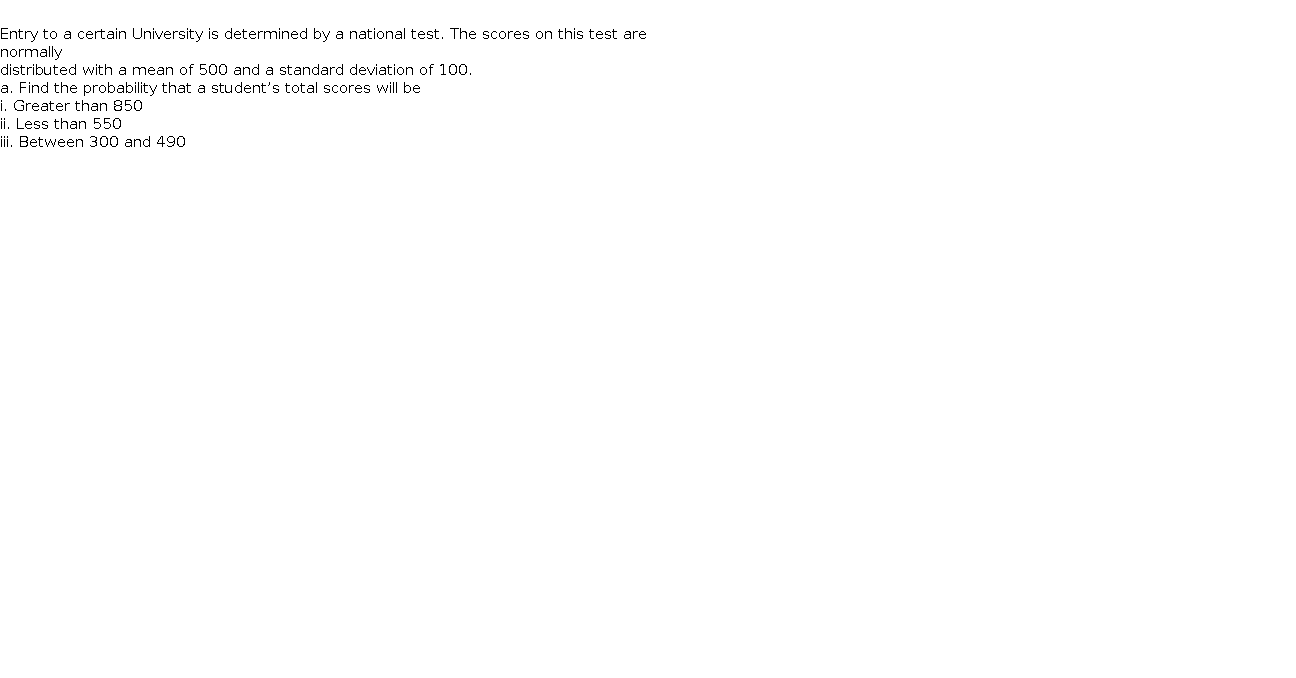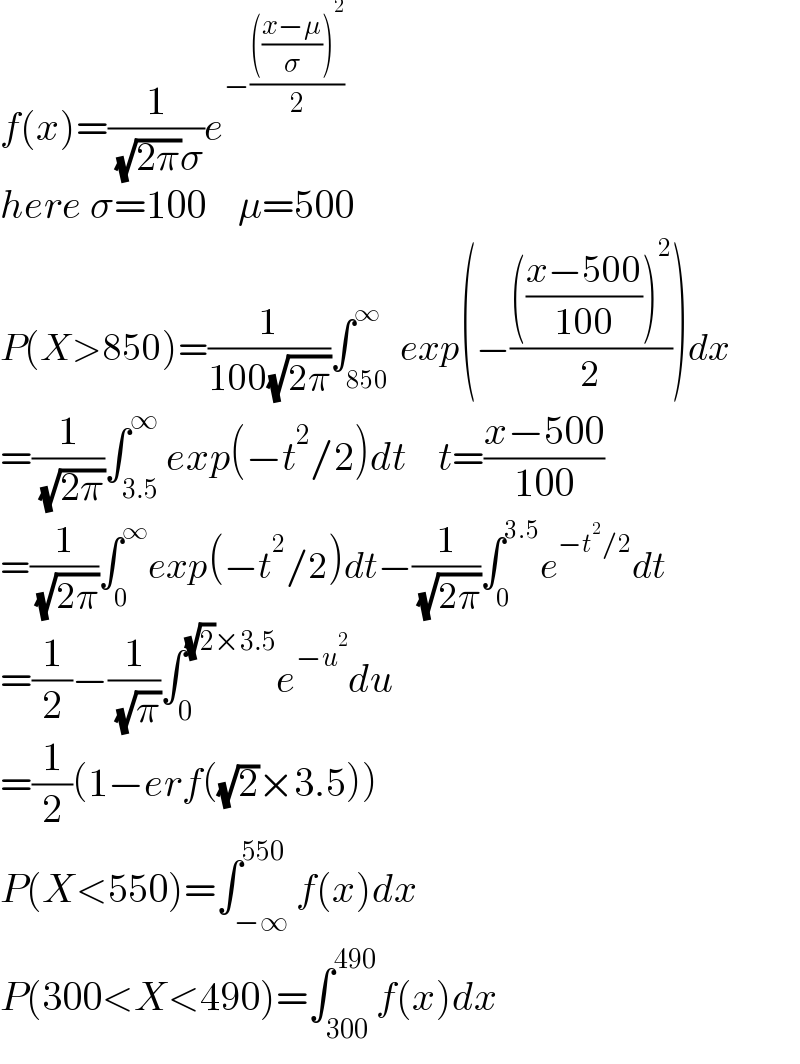Question Number 169802 by MathsFan last updated on 09/May/22

$$ \\ $$Entry to a certain University is determined by a national test. The scores on this test are normally
distributed with a mean of 500 and a standard deviation of 100.
a. Find the probability that a student’s total scores will be
i. Greater than 850
ii. Less than 550
iii. Between 300 and 490
distributed with a mean of 500 and a standard deviation of 100.
a. Find the probability that a student’s total scores will be
i. Greater than 850
ii. Less than 550
iii. Between 300 and 490
Answered by shikaridwan last updated on 10/May/22

$${f}\left({x}\right)=\frac{\mathrm{1}}{\:\sqrt{\mathrm{2}\pi}\sigma}{e}^{−\frac{\left(\frac{{x}−\mu}{\sigma}\right)^{\mathrm{2}} }{\mathrm{2}}} \\ $$$${here}\:\sigma=\mathrm{100}\:\:\:\:\mu=\mathrm{500} \\ $$$${P}\left({X}>\mathrm{850}\right)=\frac{\mathrm{1}}{\mathrm{100}\sqrt{\mathrm{2}\pi}}\int_{\mathrm{850}\:} ^{\infty} {exp}\left(−\frac{\left(\frac{{x}−\mathrm{500}}{\mathrm{100}}\right)^{\mathrm{2}} }{\mathrm{2}}\right){dx} \\ $$$$=\frac{\mathrm{1}}{\:\sqrt{\mathrm{2}\pi}}\int_{\mathrm{3}.\mathrm{5}} ^{\infty} {exp}\left(−{t}^{\mathrm{2}} /\mathrm{2}\right){dt}\:\:\:\:{t}=\frac{{x}−\mathrm{500}}{\mathrm{100}} \\ $$$$=\frac{\mathrm{1}}{\:\sqrt{\mathrm{2}\pi}}\int_{\mathrm{0}} ^{\infty} {exp}\left(−{t}^{\mathrm{2}} /\mathrm{2}\right){dt}−\frac{\mathrm{1}}{\:\sqrt{\mathrm{2}\pi}}\int_{\mathrm{0}} ^{\mathrm{3}.\mathrm{5}} {e}^{−{t}^{\mathrm{2}} /\mathrm{2}} {dt} \\ $$$$=\frac{\mathrm{1}}{\mathrm{2}}−\frac{\mathrm{1}}{\:\sqrt{\pi}}\int_{\mathrm{0}} ^{\sqrt{\mathrm{2}}×\mathrm{3}.\mathrm{5}} {e}^{−{u}^{\mathrm{2}} } {du} \\ $$$$=\frac{\mathrm{1}}{\mathrm{2}}\left(\mathrm{1}−{erf}\left(\sqrt{\mathrm{2}}×\mathrm{3}.\mathrm{5}\right)\right) \\ $$$${P}\left({X}<\mathrm{550}\right)=\int_{−\infty} ^{\mathrm{550}} {f}\left({x}\right){dx} \\ $$$${P}\left(\mathrm{300}<{X}<\mathrm{490}\right)=\int_{\mathrm{300}} ^{\mathrm{490}} {f}\left({x}\right){dx} \\ $$
Commented by MathsFan last updated on 10/May/22

$${wow} \\ $$$${thank}\:{you}\:{sir} \\ $$
